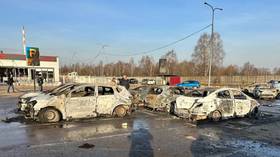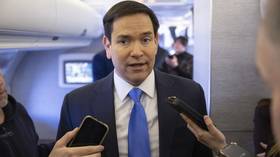Young scientists get their chance to shine in Moscow

A life-saving balloon and a revolutionary aircraft design are just some of the inventions that young scientists from all over Russia have been showing off at the ‘Step into the Future’ exhibition in Moscow.
The statue of Sergei Korolyov, one of Russia’s most famous rocket scientists, watches over the students at Moscow’s Bauman institute of Technology. Eighty years ago he was studying here, dreaming the dreams that would one day help make Yury Gagarin the first man in space. And now, on the centenary of his birth a new generation of Russian scientists have come to the ‘Step into the Future’ exhibition.
Some of the best young minds in Russia, award-winners chosen from schools around the country, have come and show-off their inventions at the exhibition. They may not all be tall, but they do have some big ideas.
Seventeen-year-old Alexei from Chelabynsk is hoping his new flexible aircraft design is going to have a big impact on the aviation industry.
“I’ve been dealing with aircraft modelling for 9 years. As soon as I saw some pictures of models I got interested in them, and I hope this passion will remain for the rest of my life. Right now, me and some other students from Chelyabinsk are designing an aircraft model which I think will really fly in the future,” he thinks.
But he may have to share the spotlight with 16-year-old Mihail from Murmansk who’s expecting his new geometry theory to take the world by storm.
“I plan to research one more branch of this theorem, which could bring practical results for architecture and construction. I think it will keep me busy for the next five or six years. But I have global ambitions for the future,” he explains.
Professor Igor Fyodorov founded the programme 15 years ago and has seen it grow to achieve international recognition.
“Europe has assessed our achievements so highly that in 2005 our program participated in the European competition of young scientists. The European Union holds it in various countries and cities every year and two years ago our university was chosen as the venue. This is an example of the program’s direct impact not only on Russian but also European education,” Mr Fyodorov says.
Judges were busy searching for the top three junior boffins at this year’s exhibition. They’ll get the chance to represent Russia at the European competition of young scientists in Spain later this year.













